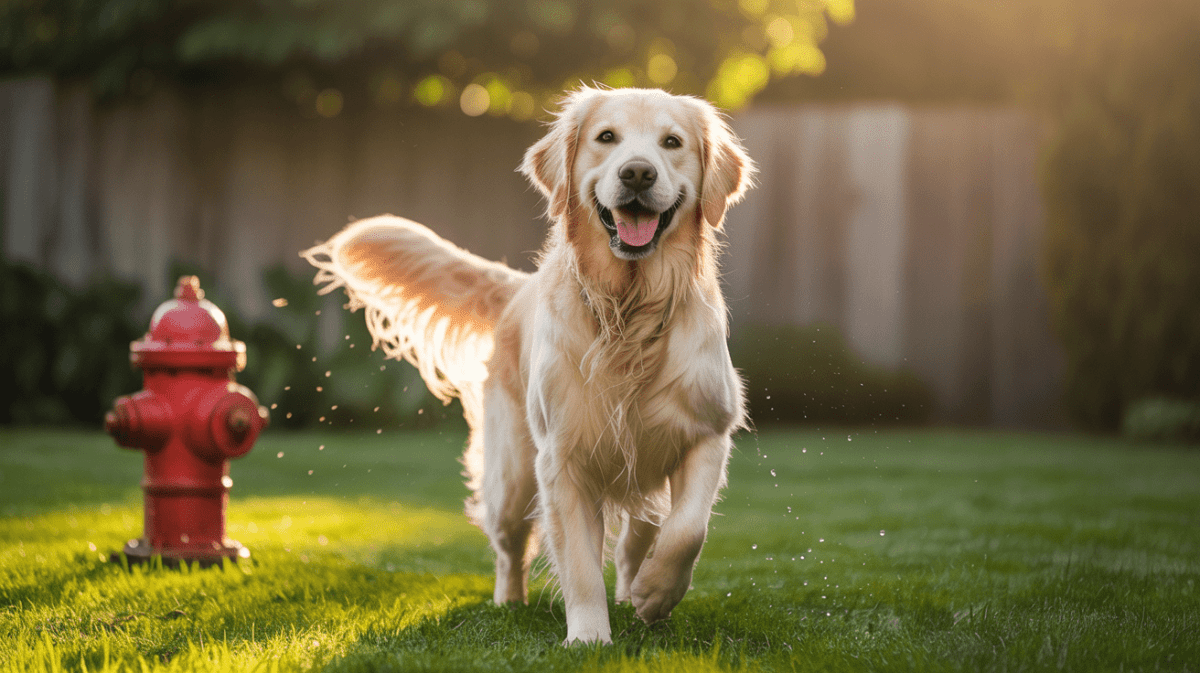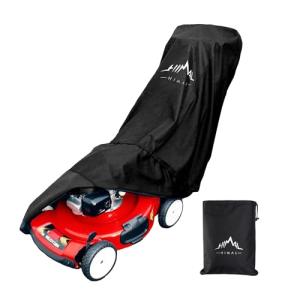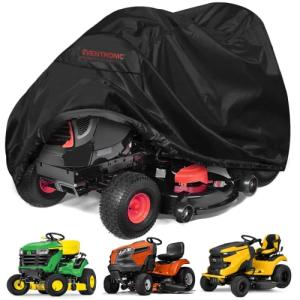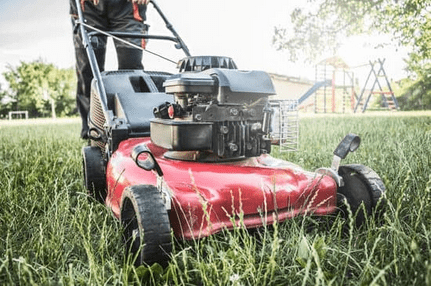The Lawn Whisperer: Saving Your Grass from Dog Pee Spots

Brown Spots Be Gone: A Guide to Fixing Dog Pee on the Lawn
There might be a solution if your lawn has strange brown areas surrounded by grass that looks to be dying. Dog urine is the issue since it can harm your lawn and leave you with dead grass sections that are barren. Nitrogen is abundant in urine, along with several other salts that might damage your grass. Fortunately, there are steps you can take to mitigate the harm and prevent brown patches from developing later.
How Do You Restore Grass from Dog Urine?
Brown grass that your dog has urinated on might be unattractive. There are, however, techniques to repair the damage and restore your landscape.
Raking the afflicted area and lightly covering it with horticultural lime is one option. The nitrogen and salts in dog urine will be dispersed and diluted by the liming process.
Dog poop damage to grass can also be repaired by reseeding the area with fresh grass seeds. To prevent salt from preventing seed germination and harming new sprouts, ensure the area has been treated with PetiGreen before reseeding.
Altering your dog's diet is another way to lower the nitrogen levels in its pee. For instance, some dogs require more water than others; therefore, increasing their water intake could lower the nitrogen levels that harm grass.
Training your dog to use a single location in your yard is the most effective way to prevent dog poop stains. To lessen the harm, you might fence off the area and cover it with vegetation.
Will Grass Grow Back After Dog Urine?
The unsightly brown or yellow patches of dead grass that develop on dog owners' yards after their pets urinate on them frequently can be frustrating. However, there are several things you can do to aid in the repair of the damage and encourage the growth of your grass again.
Understanding the root of the issue is the first thing you must accomplish. Salts and nitrogen found in large quantities in urine can burn grass when concentrated in one spot.
Similar to what happens when fertilizer is applied excessively, this happens when a dog repeatedly urinates in the same place. The grass is then destroyed by the dog's urine nitrogen, leaving a dead area with a dark green ring around it.
Spread topsoil and peat moss over the impacted portions of your yard, then scatter grass seed over it to bring back the green hue. By doing this, the soil will become more resistant to urine from dogs. As the new grass grows, you'll also want to keep your dog away from the seeds.
$46.82
4.47 out of 5 starsJonathan Green Organic Fertilizer and Weed Control
Boost your lawn’s health while tackling stubborn weeds the natural way
Product information
Product Review Score
Product links
Will Baking Soda Work?
In certain circumstances, dog poop-related brown patches on your lawn can be repaired with baking soda. It can be challenging to ignore these discolored patches on your grass, even though this is a frequent issue for many dog owners.
However, you shouldn't believe that baking soda would cancel out the nitrogen in your lawn that creates brown patches of grass. In actuality, baking soda has no impact on how much nitrogen is present in your dog's pee.
Instead, it will help restore the pH levels of your grass. It will be able to reclaim its original hue as a result. But be careful not to apply too much baking soda to the afflicted area as this can exacerbate the issue by making your lawn more acidic and causing gypsum accumulation. Before application, it is preferable to dilute the dog's urine with water.
Can you Prevent Dog Urine Patches?
It’s no secret that dog pee can ruin a lawn, but there are ways to prevent those unsightly brown spots. First, you’ll need to understand why your grass has become damaged in the first place.
The most obvious reason is that a dog’s urine has high concentrations of nitrogen. These nitrogen-containing compounds and associated salts can severely damage your grass if they accumulate in excessive concentrations.
Fortunately, you can dilute the potency of this nitrogen and minimize damage by watering your lawn when the dog urinates. Whenever you see dog urine spots appear, it’s important to water the area deeply and repeatedly until it flushes out the surrounding soil.
Another proactive approach is to train your dog to urinate in a specific area of the yard. This will significantly reduce the number of brown spots on your lawn.
What Causes The Damage?
There are many urban legends about how dog urine affects your grass. Most of them are inaccurate, but one true thing is that dogs love to eat, roll on and play in the grass.
As a result, they are "fertilizing" the grass in their own little way by leaving nitrogen deposits on it. When too much nitrogen is concentrated in a small area of the soil, it burns the grass, leaving it looking yellow or brown.
But, there is a solution!
Female dogs often cause the most damage to the lawn because they squat when urinating, depositing their urine in a single, concentrated spot. Male dogs lift their leg and spray their urine over a larger area, causing less damage to the grass.
There are also several methods to prevent brown spots in your yard, such as mulching with wood mulch and training your dog to urinate elsewhere. Another option is installing an artificial lawn. This will give your pet his own fenced doggy potty area without damaging the rest of your yard.
Checkout this product that should help you:
Select the right grass seed
Selecting the appropriate grass seed is the first step in removing dog urine-related brown spots from your lawn. It's crucial to select the grass seed that is suitable for your lawn, as different grass species thrive in varying temperatures and soil types.
There are straight kinds of grass seed (one kind of grass) and mixes of grass seed (several types of grass). Blends are a wonderful choice for homeowners who want a lawn with higher disease resistance and a more uniform appearance. However, ensure that the blend only contains the types of grass you require.
You should also consider how much sunlight your yard receives. While some grass seed varieties require full sun, others benefit from little shade.
Lastly, consider the amount of foot traffic your grass receives. A species like Kentucky bluegrass, for instance, would be the greatest option if you frequently host visitors or youngsters who play sports or utilize the water in your yard. This turf variety may require more frequent mowing, feeding, and watering than fine fescue, as it is more susceptible to brown or patchy regions.
Till or Rake the Soil
Your dog's accidents on the lawn might leave behind brown grass stains that can spoil the appearance of your yard. Fortunately, there are techniques available to address these brown spots and restore your grass to health.
To prepare the space for sowing, begin by tilling or raking the soil. For smaller bare areas, use a spade; for bigger ones, a rotary tiller.
Spread Black Beauty SeedRoll or Jonathan Green Lawn Repair on the prepared, loose soil to fill in bare places swiftly. A combination of seeds in these goods is designed to thrive in challenging environments, such as those contaminated with dog urine.
As the new grass develops over the next few weeks, keep the area consistently moist. When the young grass is two inches tall, water it once or twice a day as needed.
Rolling a handful of dirt between your fingers can help you determine its moisture level before you start tilling. It is too damp to work if it clumps together yet separates on its own.

Seed Fertilize and Water
You need to fertilize your lawn and seed it to encourage thicker, healthier grass growth. Then, you must continuously water it, especially in the first several weeks following sowing.
Freshly overseeded lawns require regular hydration to encourage healthy root development and avoid withering. Until the seeds sprout, irrigate the soil two to three times per day.
After that, add a thin coating of sand to the soil to aid in the seed's quick germination and the growth of strong roots. To spread the sand uniformly, use a rake.
Before planting seeds, you could also decide to fertilize your lawn. Starter fertilizers supply the nutrients, such as phosphorus and nitrogen, that your new grass needs to thrive rapidly and effectively.
The three nutrients—nitrogen, phosphorus, and potassium—and the composition of lawn fertilizers vary. You pick the one that works best for your grass type and the season.
In Conclusion:
In conclusion, the health and appearance of your lawn can be greatly impacted by the effects of dog urine. However, with the tips and advice shared by the Lawn Whisperer in this blog post, you can take the necessary steps to revive and protect your grass.
Whether it's adjusting your dog's diet, watering your lawn regularly, or using specific products, the key to success is taking action and staying vigilant. With a little bit of effort and the right information, you can have a beautiful, healthy lawn that's free from the damaging effects of dog urine.
DISCLAIMER
This document is provided for general information purposes only and should not be relied upon as providing legal advice, technical, or specific operational guidance to the reader, whether as to the practices described in the document or the applicable legal requirements and regulations. Lawnfly.com expressly disclaims any responsibility for liability arising from or related to the use or misuse of any information in this document.
DISCLAIMER
This document is provided for general information purposes only and should not be relied upon as providing legal advice, technical, or specific operational guidance to the reader, whether as to the practices described in the document or the applicable legal requirements and regulations. Lawnfly.com expressly disclaims any responsibility for liability arising from or related to the use or misuse of any information in this document.









